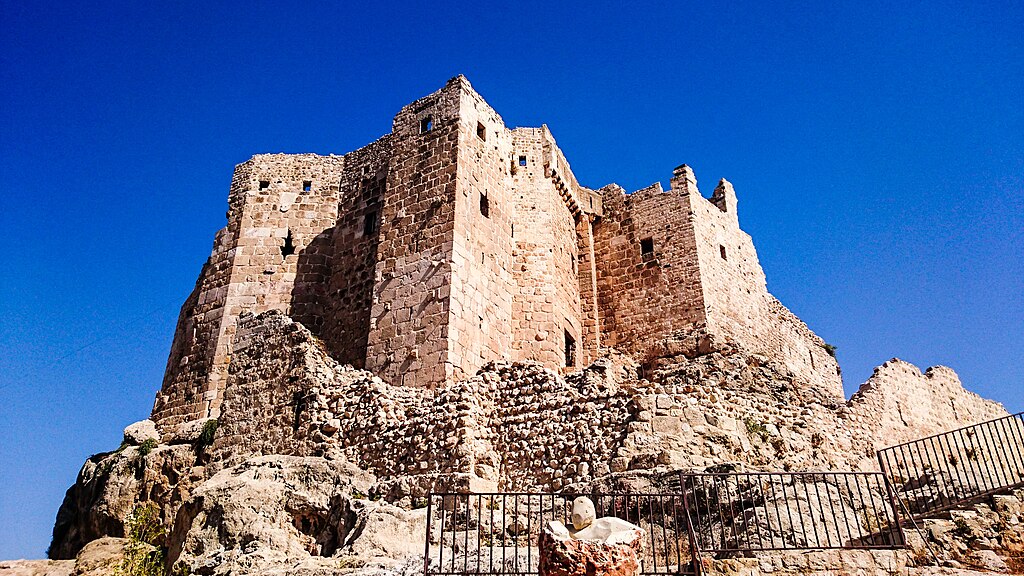In an epilogue to his new book Assassins and Templars, Steve Tibble says (or, perhaps, protests) that his book really has nothing to do with the video game “Assassin’s Creed”, that any similarity is not so much coincidence as common intellectual and cultural ancestry. Readers of a certain generation might entertain some skepticism, especially in light of Tibble’s colloquial (albeit steadfastly rigorous) approach to the subject. Tibble might nevertheless have been aware of some pop-culture competition for reader mind-space, for he has written a page-turner of a history.
There have been books on both the Assassins and the Templars (one of the latter from Tibble himself). But Tibble focuses on the Assassins in Syria (rather the head office operations in Persia), as well as “the extraordinary relationship they had with the Templars”.
The Assassins and the Templars have become two of the most legendary groups of modern times. Although both have accumulated a huge deadweight of mythology and absurd conspiracy theories along the way, the roots of their intertwined story contain, oddly enough, much that is true and similar. The tactics were different, but their foundations were the same. The promise of unstoppable death might be ‘in your face’ in the form of a Templar charge. Or it could be unstoppable death ‘in your back’ in the form of an Assassin’s dagger. But death was at the core.
The similarities are, indeed, uncanny. Tibble portrays them, by and large, as a convergence of methods and philosophies due to a similarity of external conditions:
The Templars took an extraordinarily parallel path to that of the Assassins. This was no coincidence – their direction was propelled by many of the same underlying reasons. Like the Assassins, the Templars were few in number, often isolated and unpopular. And, like the Assassins before them, they instinctively came up with ways to generate a ‘multiplier-effect’ for their tiny forces.
Tibble is a good storyteller.

Along the way, Tibble engagingly recounts a great many stories (some of which readers may well have heard before, but a great many more are likely to be new) and undercuts a number of myths (for example, that the Assassins were drugged up before they undertook their attacks); he convsersely lends credence to other (often unsavoury) contemporary claims that have since been questioned as propagandistic or unreliable. Tibble also takes issues with some historiography:
Time after time, we now find the Assassins touting for business among their Sunni neighbours, only too happy to trade the deadly services of their murder squads for cash payments and political advantage… Historians have often either ignored this seeming contradiction, or claimed that it did not actually happen. Instead, they argue, a lot of the ‘contracts to kill’ ostensibly taken out on behalf of Sunni clients were either obfuscations by the sect or fabrications by its enemies…
while going on to provide a convincing economic argument that Assassins had few other alternatives to cover their “eye-watering” costs.
By focusing on two groups which while important were nonetheless outside the political mainstream, Tibble tells a different history.
But Assassins and Templars is perhaps better read more broadly a history of what was once called the Levant in the 12th and 13th centuries. This is not a history of the Crusades per se, but without Crusades, this book (and the video game) would not have been possible: there would have been Assassins, but there wouldn’t have been Templars.
By focusing on two groups which while important were nonetheless outside the political mainstream, Tibble tells a different history. The names known to most people—Baldwin, Richard, Tancred, Saladdin—are all there, but they are not the protagonists (even when they are the targets of assassination). It is also a history which highlights the importance of doctrinal differences between Muslim factions (the Assassins were a splinter of a sect of a splinter group, and seem at one point to have given up Islam altogether). Sunni Muslims were targeted for assassination far more than Frankish Crusaders. In this telling, the Assassins’ story does end with the capture of Alamut in Persia by the Mongols (“the medieval equivalent of a zombie apocalypse”, writes Tibble) in 1256, but instead continues (albeit in diminished fashion) in Syria for a few more decades.
Tibbet also uses the Assassins and Templars to show how inconstant and fractious political relations of the time were: sometimes enemies, less often allies, and for a while, the Assassins paid tribute to the Templars.
Tibble concludes:
Both groups were, from our comfortable standpoint almost one thousand years in the future, a failure. The Templars were formed to defend the Christian communities of the Middle East, but they failed to do so: all the crusader states were destroyed. The Assassins and their revolutionary religio-political doctrines did not overthrow the Seljuk Turks or their successors. They carved out a couple of minor principalities for a time, but little more. They did not even hold any major cities. Both sects were eventually brushed aside by their much larger military opponents.
But it’s also hard not to think how pointless the Crusades were. Outsiders managed to establish themselves for quite a long while, but in the end, the forces of history re-established themselves, but only after considerable bloodshed. Both the Assassins and the Templars,
also exceeded most expectations. In doing so, they pushed the bounds of dedication and commitment to new limits. And it is that extraordinary legacy, with all its faults, which deserves to be …
“remembered”, writes Tibble. Others might think, “avoided, if at all possible”.


You must be logged in to post a comment.